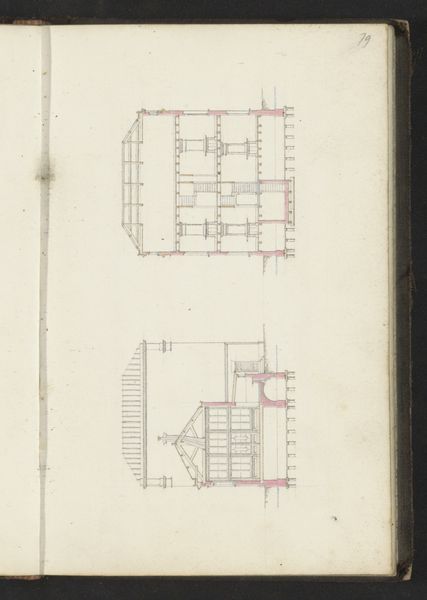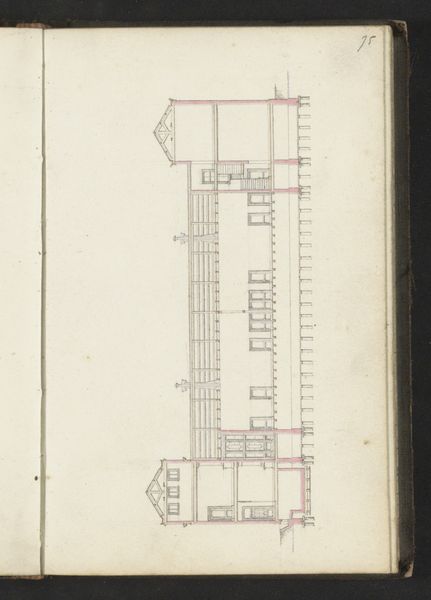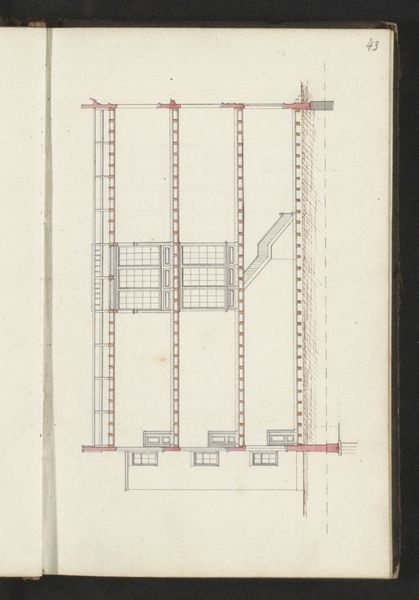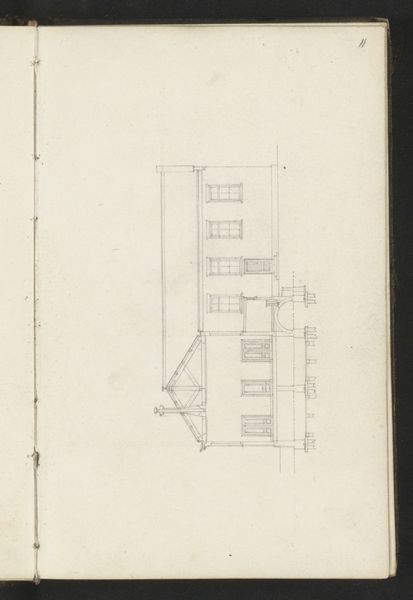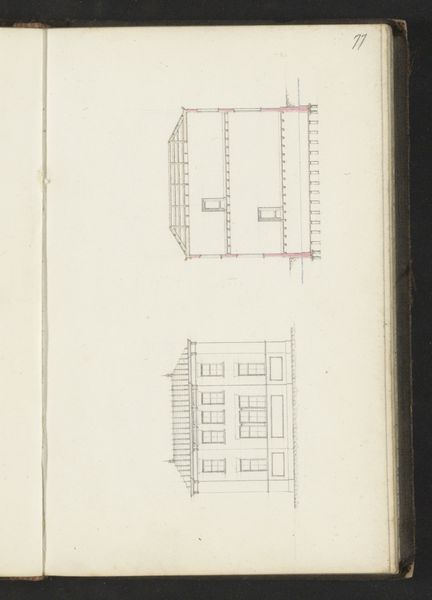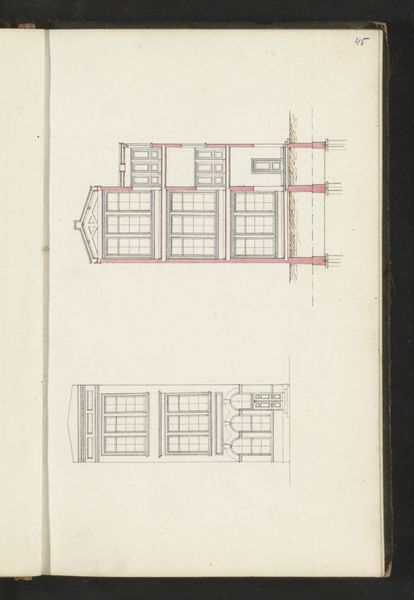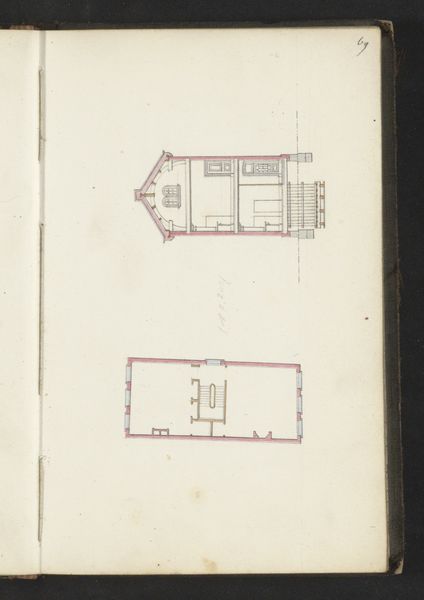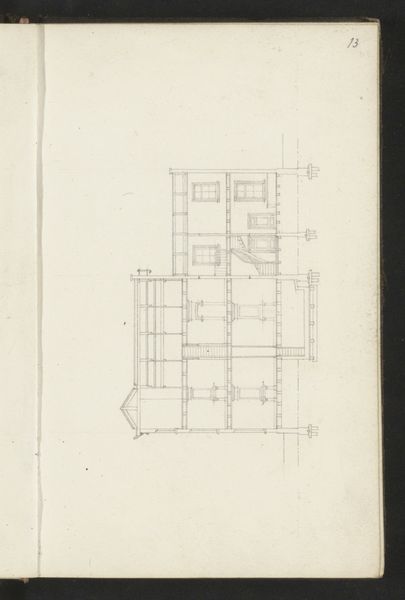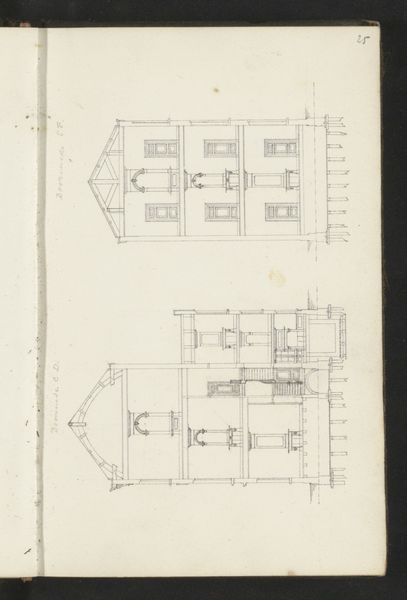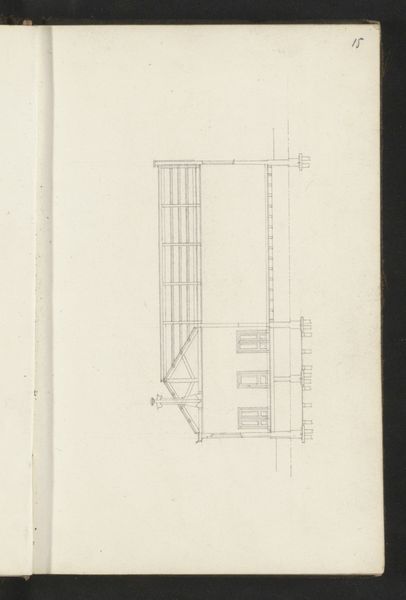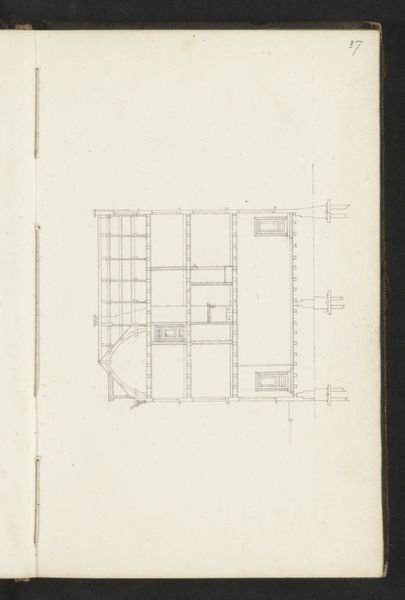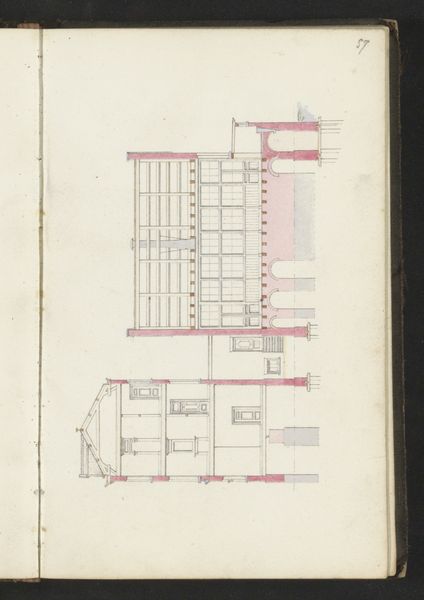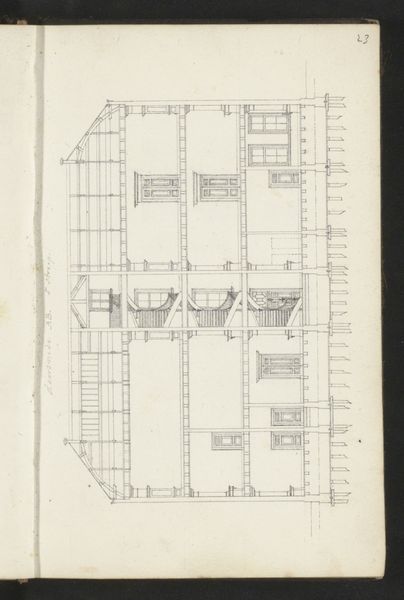
drawing, paper, pencil
#
drawing
#
paper
#
form
#
geometric
#
pencil
#
line
#
cityscape
#
academic-art
Copyright: Rijks Museum: Open Domain
Editor: Here we have Willem Springer Jr.'s "Doorsnede van een gebouw over de breedte," a pencil and paper drawing from around 1864. It seems quite technical and precise. What stands out to you in terms of imagery? Curator: The architectural drawing immediately presents a rigid structure. Yet, within its lines, I perceive an echo of societal organization. Notice the prominence given to certain internal lines, how those connect to other elements. Consider: are these architectural features, or symbolic guides representing status within the home and by extension, the urban dwelling? How would those structural cues define someone? Editor: I hadn't thought about it that way. So, the lines themselves are significant? Curator: Precisely. Line quality communicates the hand of the architect, certainly, but think about geometric symbols throughout history. What emotional impact do perfect squares, straight lines, and other choices convey, psychologically, within the viewer? The cityscape theme points not just to the outer, material city, but to an inner landscape as well. How do architectural "rules" reflect those of society? Editor: That makes sense. Now I’m seeing the drawing as more than just a technical plan. Curator: Springer uses 'academic-art' line quality here. How would that choice guide the eye and frame our perception differently than, say, if they used jagged or broken lines? Editor: Right, the sharp, clean lines project control, order. I wonder what assumptions a viewer from that time would bring to this work? Curator: That is a superb question. Editor: Thanks. Looking at it from this perspective, I appreciate how much a simple architectural drawing can tell us about social values. Curator: Indeed. Images, even technical ones, are never neutral. They carry within them cultural memories and project desires for the future.
Comments
No comments
Be the first to comment and join the conversation on the ultimate creative platform.
